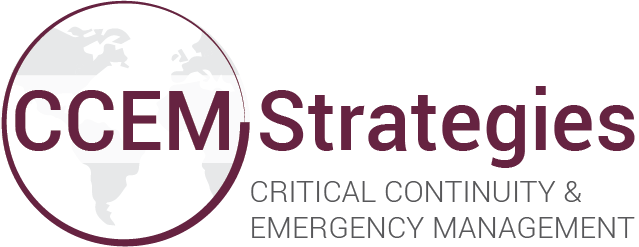In the face of escalating climate-related emergencies, the Province of B.C.’s recent allocation of $18 million for Indigenous engagement is a critical opportunity for communities to increase preparedness through consultation and collaboration and meet new emergency management legislative requirements. Making the most of the funding requires a strategic approach and effective partnerships. As an experienced team of emergency management and engagement specialists, CCEM shares insights and guidance to help communities leverage new and existing funding opportunities for maximum impact. Read on to learn more about the new requirements, spending options, and strategies for optimizing funding for your program.
New Legislation, New Requirements, New Funding
On November 8, 2023, B.C.’s new Emergency and Disaster Management Act (EDMA) was passed, replacing the previous Emergency Program Act. With this new legislation comes substantial new requirements for community emergency managers – many relating to Indigenous engagement. For example:
Risk assessments and emergency and business continuity plans now need to consider Indigenous knowledge, climate change, cultural safety, and impacts on vulnerable persons, animals, places or things.
In alignment with UNDRIP and B.C.’s DRIPA, local governments are now required to consult and cooperate with neighbouring First Nations governments during all phases of emergency management.
To assist communities in meeting these requirements, the Province has launched the Indigenous Engagement Requirements (IER) Funding Program, which will distribute $45,000 - $60,000 per community. The goal of this initial stream of funding is said “to support capacity needs, relationship-building and collaboration” and is a step toward meeting the new obligations under the EDMA. A long-term funding and capacity building framework is still needed to support First Nations and local authorities in meeting the new EDMA requirements.
Strategic vs. Opportunistic Spending
A key principle to maximizing the impact of new and existing funding is to take a strategic, rather than opportunistic, approach. Opportunistic spending reacts to immediate inputs or needs without a long-term vision. On the other hand, strategic spending prioritizes resources based on identified needs, established objectives, and long-term goals, ensuring cohesive and results-oriented utilization. It also provides a foundation for the development of future business cases and funding requests, whether through the Province or other partners.
Consider for example, UBCM’s existing Community Emergency Preparedness Fund (CEPF). It has been criticized in the past for incentivizing short-term spending on distinct program elements like equipment, training, and route planning. However, over the past two years, the program has evolved to include streams like Disaster Risk Reduction – Climate Adaptation, which encourages a long-term perspective on emergency management project implementation and has included amounts higher than previous funding streams.
Strategies to Maximize Impact on IER Funding
The IER Funding Program presents an opportunity for communities to assess and fortify their emergency management programs through engagement. Here are four initial strategies that can optimize spend with the current funding level and lay the groundwork for future projects, fostering resilience and collaboration in alignment with the EDMA:
Prioritize Capacity Assessment: Conduct a comprehensive emergency management capacity assessment. Build on and reference existing risk assessments, plans, and other program elements. Identify gaps, strengths, and opportunities for collaboration. Use the results to set engagement, consultation, and collaboration objectives and form the basis for long-term capacity development.
Foster Cultural Safety Skills: Invest early in staff development and training for cultural safety and humility practices, such as facilitated learning sessions. Deepen understanding and seek to leverage diverse perspectives, values, and traditions through all phases of emergency management. Establish cultural safety and humility as a regular practice of the emergency management program.
Plan for Long-Term Collaboration: Develop comprehensive multi-year collaboration plans and/or formal agreements that span all phases of emergency management. Use results and objectives identified in early engagement to outline a roadmap for joint development and clarify expectations between partners. The plans can change over time, but agreeing on long-term initiatives early helps build momentum.
Build Cyclical Engagement Systems: Establish cycles and platforms (working groups, committees, community liaisons, etc.) that facilitate sustained, continuous engagement and collaboration. Build multi-faceted engagement spaces and forums, both physical (shared meeting and operating spaces, site and community visits, etc.) and virtual (website and social, webinars, public surveys, etc.), to encourage ongoing dialogue and relationship building.
Increase Capacity by Pooling Resources: Work together with neighbouring communities by pooling funds received through the Indigenous Engagement Requirements Funding Program to increase capacity, streamline efforts, and meet shared priorities or to tackle larger or more complex initiatives.
Maximizing the impact of the IER Funding Program requires deliberate action. Funding award letters and Contribution Agreements will be sent to eligible recipients this week (week of January 8, 2024) so keep an eye out to confirm the funding amount your community has been awarded and prepare to complete your Contribution Agreement by March 31, 2024. Contribution Agreements need to include a brief description of the activities you will use the funding for.
The team at CCEM can help. We work with First Nations and local authorities from across British Columbia and can apply our expertise to customize a strategy for your community. Contact us today to get started!
Additional Resources:

